Ampelous fuchsia: popular varieties, features of cultivation and propagation
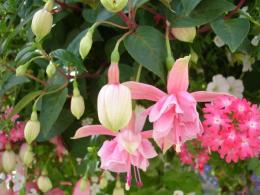
Beautiful long stems of plants hanging from a hanging planter have become popular recently. Flower lovers appreciated their decorative properties. After all, with just two or three flowerpots you can decorate a fairly large space on the wall. Such plants are called ampelous. Their name comes from the German word for hanging flower vase. One of them is ampelous fuchsia.
Content:
The history of fuchsia, its types
Accustomed to the magnificent fuchsia flowers growing on the windowsills, we do not even admit that the well-known herbs fireweed, fireweed and even the inconspicuous circe are its close relatives. Decorative fuchsia came to us from the tropical forests of Central and South America. Its fruits were used as food by the ancient Aztecs. It came to us through England only two hundred years ago.
Ampelous fuchsia was developed not so long ago. There are terry, semi-double and simple types. Common colors of its flowers:
- red
- pink
- white
- purple
The most popular varieties ampelous fuchsia:
- white Holly's Beauty, pink Pink Galore and Southgate
- red Bicentennial and Marinka
- white and pink Bella Rosella and Sir Matt Busby,
- red-violet Maori Maid and Dark Eyes,
- red-white Swingtime
Growing ampelous fuchsia
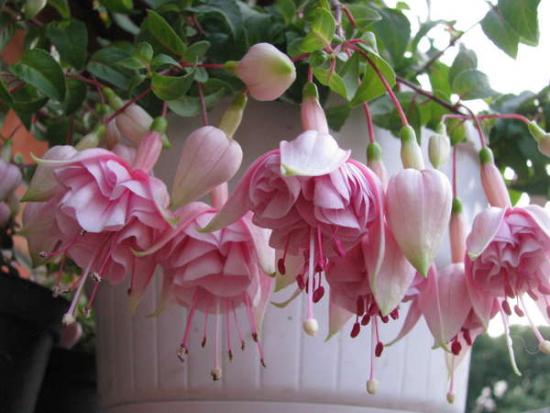
Fuchsia is not picky allows you to grow even for a beginning amateur gardener. She loves moderate sunlight and feels comfortable even in partial shade. The shade only affects the abundance of its flowering, but not its health. The plant likes average room temperature and the absence of drafts. Often, ampelous fuchsia is grown to decorate the facades of buildings and cottages.
She is very supportive of fresh air. The only thing that the plant does not accept and does not tolerate well is the slightest interference in its dormancy during flowering. It is not advisable to move fuchsia from place to place, rehang it, replant it, or simply rotate it relative to the light source. Otherwise, she will be offended and throw off her flowers.
Caring for ampelous fuchsia
- A more unpretentious plant is difficult to find. Ampelous fuchsia will adapt to any microclimate, watering and lighting. When caring for it, you must adhere to several rules:
- exclude direct sunlight
- exclude any movement of the plant during flowering
- create the most acceptable temperature in winter - 8-10 degrees, in summer - 20;
- watering in combination with spraying
- regular fertilizing with complex fertilizers every two weeks during flowering
- Remove faded flowers to encourage further budding
- regular anti-aging pruning to prevent bare stems
- timely detection and control of pests and diseases
Reproduction of ampelous fuchsia
Flower growers prefer propagating fuchsia by cuttings. Growing flowers from seeds it is possible, but this is a very labor-intensive process and is used only for breeding purposes. Young, non-lignified plant stems are suitable for cuttings.The cuttings are placed in water, after removing the leaves to prevent them from rotting.
To avoid premature depletion of the cuttings caused by lack of moisture, the remaining leaves are trimmed to reduce moisture loss. It is better to take water for rooting from melt or rain. As a last resort, tap water must be settled or filtered. On average, the root formation process takes about two weeks.
You can immediately plant the prepared petiole in the ground without waiting for the roots to appear in the water. In this case, it is necessary to cover the pot with cellophane for two weeks. Fuchsia, although an undemanding plant, is best propagated in the spring. In hot summer weather, this process may take longer.
Diseases and pests

With low air humidity, fuchsia does not feel very comfortable. A weakened plant can be affected by spider mites and aphids. But most often it is attacked by whiteflies. It is dangerous not only because it sucks the juices out of the plant. She is a carrier of viral diseases.
For the prevention and control of small amounts all pests You can use a soap solution. Spider mites do not like spraying with regular warm water. It is necessary to spray plant leaves on both sides. In case of mass damage, the help of insecticides will be required.
Yellow leaves of ampelous fuchsia may indicate a violation of photosynthesis in the plant. This may be a consequence of overwatering or a lack of useful minerals. With good drainage and regular feeding, this disease is excluded.
Healthy fuchsia roots should be white. Brown indicates overflow. The plant is not subject to treatment, it needs to be thrown away.By selecting several types of hanging fuchsia, you can create magnificent original ensembles that will delight the owners and arouse the admiration of their guests. This is an ideal plant in its beauty and unpretentiousness for any, even the most demanding, esthete.
Watch the video for the intricacies of caring for fuchsia:
Interesting information about the vegetable garden

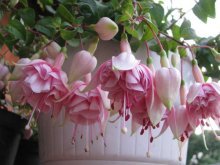
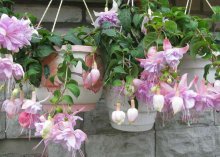
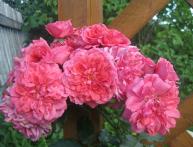
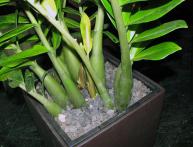

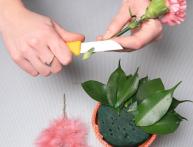
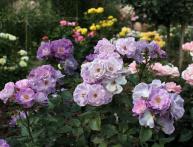
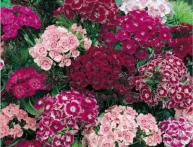

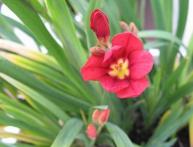
Comments
My relationship with ampelous fuchsia does not work out. I love these flowers and they often give them to me. But the flowers quickly fall off, and new buds are not formed. What is the reason? Maybe there is not enough feeding?